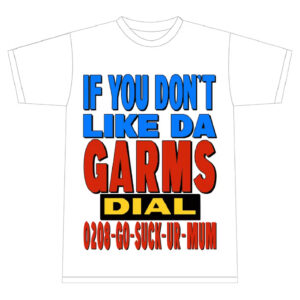
social media management tool
Are You Losing Time Juggling Too Many Platforms? Do you find your team struggling to keep content aligned, reports accurate, and approvals timely across different platforms? It’s a common issue. Many U.S.-based teams post inconsistently, mismanage their publishing calendar, or rely on manual spreadsheets. If that sounds familiar, your workflow may be too fragmented.
You likely use multiple tools for scheduling, approvals, analytics, and asset storage. But switching between them leads to delays and miscommunication. Choosing the right social media management tool can change how your team performs.
The right system supports content workflows, aligns communication, and reduces errors. Before subscribing to another platform, read this expert breakdown and learn how to choose based on real team needs, not just features.
Align the Tool With Your Operational Workflow
Many tools look good in demos. But unless they match your team’s structure, they add more steps than they solve.
Look for tools with these features:
-
Workflow Automation:
Your tool should mirror how your team creates and approves content. If you need multi-level signoffs, select a system with internal review chains. It should support tagging, approvals, and comments within each post.
-
Cross-Platform Content Publishing:
Your publishing flow must match audience behavior. A tool should let you schedule and tailor content for Instagram, LinkedIn, X (Twitter), Facebook, and TikTok at once, without using external editors.
-
Asset Storage and Version Control:
If your team manages a lot of media, you need file management. A tool with a built-in digital asset manager will keep brand visuals consistent and make sure only approved files go live.
Technical Evaluation Criteria You Shouldn’t Skip
Before you finalize your platform, check its technical capabilities. Functionality matters, but reliability matters more when you have deadlines.
Break down the backend like this:
-
API Integration Support:
Select a tool that connects with your CRM, analytics dashboard, content design software, and ad platforms. You should never re-enter data or switch tabs to complete a task.
-
Security Architecture:
Pick a platform that supports role-based access, encryption, and two-factor authentication. Ask if they follow U.S. data compliance standards like CCPA or GDPR (if global campaigns are involved).
-
Scalability and Infrastructure:
A strong social media management tool should perform the same whether you have 2 users or 20. Check the provider’s uptime reports. If the tool stalls during bulk uploads or analytics exports, skip it.
Use These Practical Factors to Shortlist Tools
After testing functionality and infrastructure, turn to practical evaluation. These often get missed but affect daily operations more than features.
Make sure your tool checks these boxes:
-
Analytics Reporting That Works for Teams:
Avoid tools that give only high-level metrics. You need reporting broken down by campaign, post, audience segment, and engagement type. It should support exports to CSV or your BI tools.
-
Support Quality:
Ask if they offer live chat or only ticket-based responses. Response time matters during campaign errors. Also check if they provide product documentation during onboarding.
-
Automation Capabilities for Scheduling:
Batch scheduling, recurring posts, tagging by campaign type, and time zone configuration all reduce manual effort. These help teams working across markets or agencies with several clients.
Don’t Ignore Pricing Models and Billing Triggers
Price affects scalability more than any feature. If you pick a tool with high add-on fees or limited users, you’ll outgrow it fast.
Look deeper than the monthly rate:
-
User-Based vs. Tiered Pricing:
If your team is growing, avoid tools that charge per user. Look for team plans with flat pricing and high usage thresholds. Also review per-seat feature restrictions.
-
Annual vs. Monthly Contracts:
Test with monthly billing first. After confirming compatibility, switch to annual for discounts. Never sign multi-year contracts before trying the tool at full capacity.
-
Usage-Based Billing Alerts:
Some tools charge more if you exceed monthly post limits or API calls. Always check if billing scales automatically or locks at a flat rate.
Conclusion
You don’t need the most popular social media management tool. You need the one that meets your workflow, integrates with your stack, and scales with your growth. Focus on how your team works, what tools you already use, how often you publish, who approves posts, and what analytics matter. Then match that to the tool’s structure.
Don’t rush. Test, compare, and pick based on alignment. That’s how you avoid team burnout, missed deadlines, and broken campaigns. If a platform speeds up your process, gives accurate reports, and keeps your team in sync, it’s the right fit.
FAQs
- What is the most important feature for a team-based tool?
Workflow support. If your tool doesn’t reflect how your team works—review, edit, publish—then it won’t be useful, no matter how many features it has.
- How do I know if a tool has enough analytics?
Check if it reports by campaign, channel, and user-defined metrics. You should be able to filter data by custom timeframes and export it for stakeholders.
- Should I get a platform with built-in design tools?
Only if your team creates graphics in-house. If you already use tools like Adobe Express or Canva, look for integrations instead of built-in editors.
- What’s the difference between role-based and team-based access?
Role-based gives permission by job function (like admin, editor, viewer). Team-based gives access based on brand, campaign, or project. You should have both.
- Can I switch tools after building campaigns on one?
Yes, but it requires time and planning. Export your scheduled posts, audience data, and reports. Most platforms let you import CSVs or reconnect accounts.





